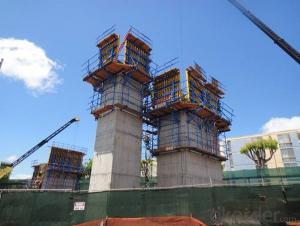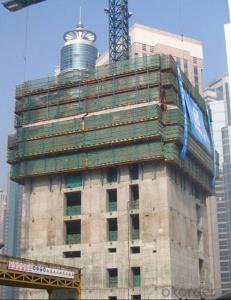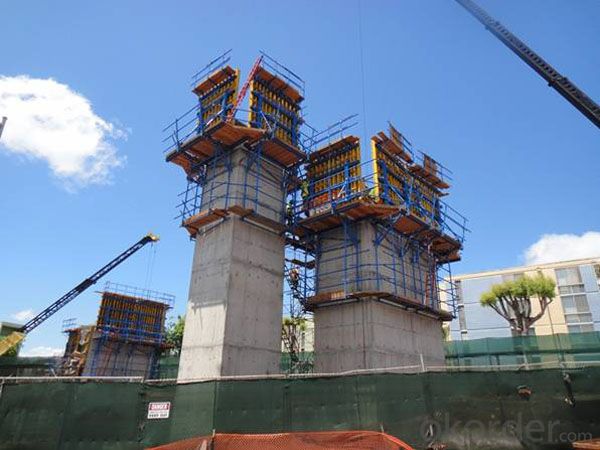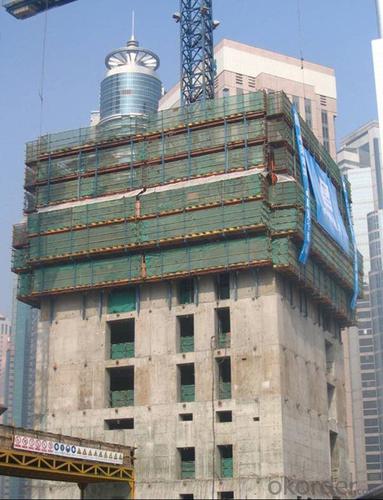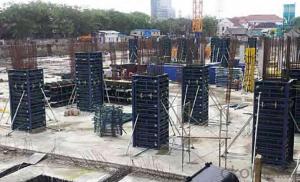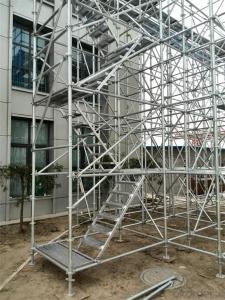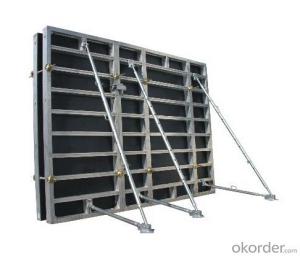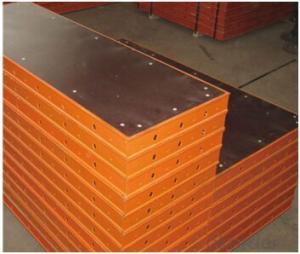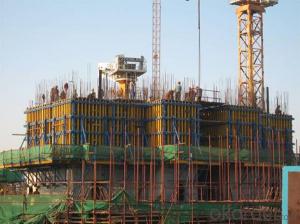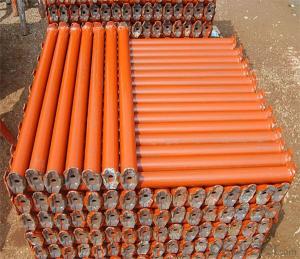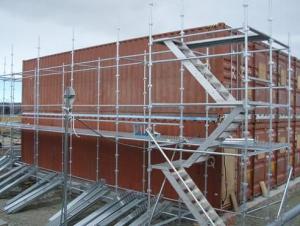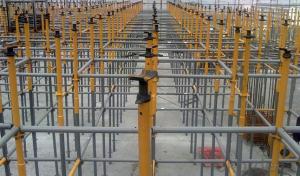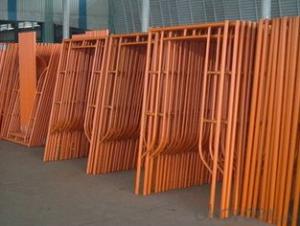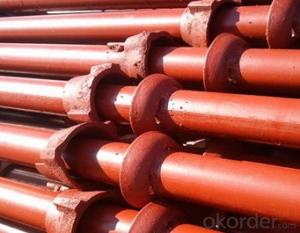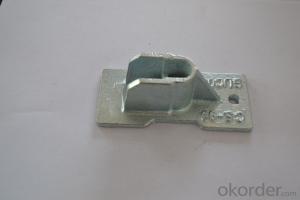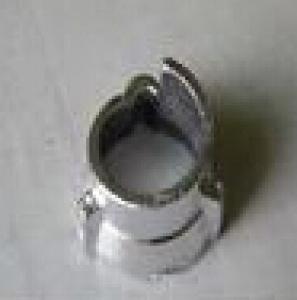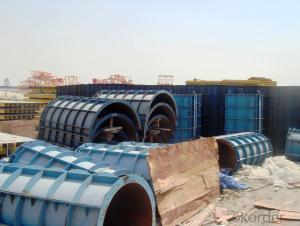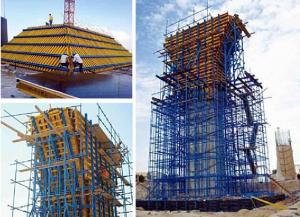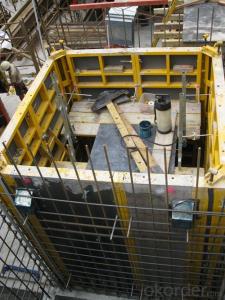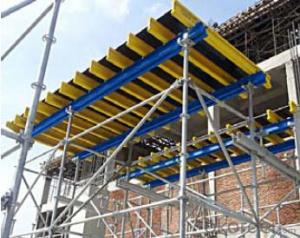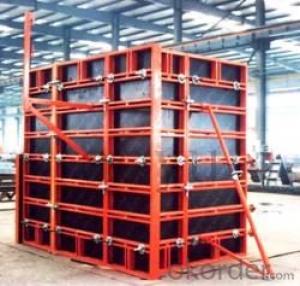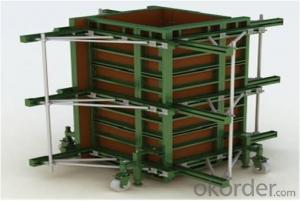Used Cuplock Scaffolding For Sale Formwork Scaffolding Catwalk With Great Price
- Loading Port:
- Tianjin
- Payment Terms:
- TT OR LC
- Min Order Qty:
- 10000 set
- Supply Capability:
- 50000 set/month
OKorder Service Pledge
OKorder Financial Service
You Might Also Like
Used Cuplock Scaffolding For Sale Formwork Scaffolding Catwalk With Great Price
Plastic Formwork Concrete Formwork System New Design
Developing with new technology materials, steel formworks is no longer a must in construction concrete process. More and more buildings are established with plastic formworks. And workers love this new formworks much more.
The advantages of plastic formworks:
1.First of all--light
Yes it is the first advantage of plastic formwork. It wins the great praise of both contractors and workers.
The biggest panel is 120×1500px,weights 10.5kg only. It can be lift and set up by one person easily, which means there is no need for cranes on site.Saves a lot of cost and time.
2.Easy set up
Different size of panels can firmly locked by simply turn the special handles to 90 degree. The Panels has rib on the back, which makes the system need not traditional wood blocks and nails. The panels have holes to fit tie rod, guarantee the strength of the whole system.
3.Modularity
Modular formworks composed by different size of panels,the main item is 120×1500px panel,which is used for the large area of walls and slabs. There are also small size of panels like 10×1500px,20×1500pxcm,25×1500px,inner corner 20×20×1500px and outer corner 10×5×1500px.Due to the variety of panel size, the system can form almost all size walls 120×1500px panel of multiply by 125px. The material of modular formwork is PC-ABS mixed with special glass fibers which enable panels to hold high pressures.
4.Strength
The handles are made by high strength Nilon, each panel locked by at least 4 handles, which makes the whole system strong enough to pour 1000px walls.
5.Environment friendly
The system needs no cut and nail due to the variety size. Also it needs nearly no wood. The material can be recycled after broken, so it will not pollute the environment.
6.Consequent
Concrete does not stick to plastic formwork, thus the panels need no oil before using, and can be cleaned simply by water. The surface of the wall which build by modular formwork is smooth and without rework.
Used Cuplock Scaffolding For Sale Formwork Scaffolding Catwalk With Great Price
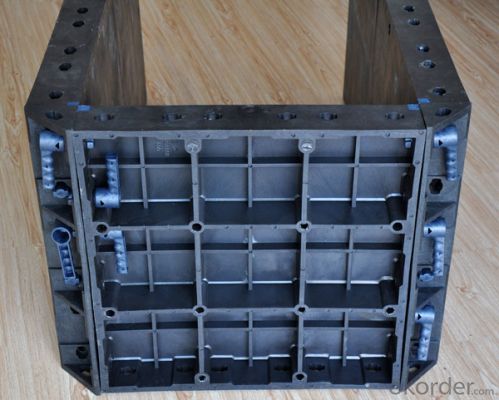
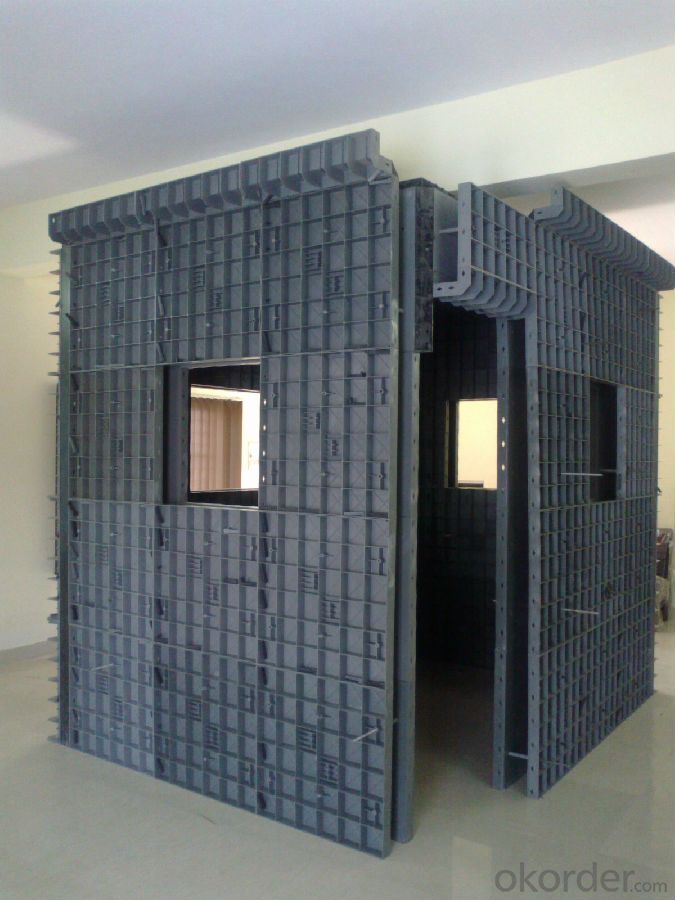
Used Cuplock Scaffolding For Sale Formwork Scaffolding Catwalk With Great Price
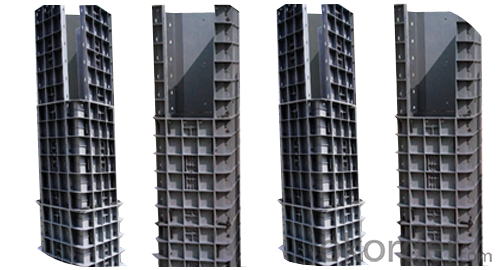
Advantage
* Good loading capacity
* Easy to assemble and dismantle
* Customized solution helps you work safe, save cost and convenient
* Excellent quality for formwork & scaffolding with wide choices
Packing
in bulk or in bundle, or as requested
Shipping
15-20 Days.
Normally small orders, it needs just 15-20 business days to the port. For goods with stock, it would be even shoter.
Used Cuplock Scaffolding For Sale Formwork Scaffolding Catwalk With Great Price
Other scaffolding & formwork products:
(1) Scaffolding System:
Including Ringlock Scaffolding System and accessories; Cuplock Scaffolding System and accessories; Kwikstage Scaffolding System and accessories; Haki Scaffolding System and accessories;
(2) Scaffolding Frame & Accessories:
Including Walk Through Frame Scaffolding; Ladder Frame Scaffolding; Accessories; we also can make scaffolding according to your samples or drawings.
(3) Scaffolding Couplers/Clamps
(4) Formwork System Scaffolding & Accessories
FAQ Used Cuplock Scaffolding For Sale Formwork Scaffolding Catwalk With Great Price
Why Us?
We are one of the Top 500 in the world, largest construction materials supplier in China. Also we are a state-owned company and respond to every customer with large and also small orders.
Excellent products with competitive prices.
Efficient services in pre and after sale.
Full energy with affluent experience team.
- Q: How many times can steel frame formwork be reused?
- The reusability of steel frame formwork depends on factors like the steel quality, the level of care during each use, and the construction project's nature. In general, steel frame formwork is built to endure multiple uses, allowing for numerous reuses, usually ranging from 10 to 30 times. However, it's crucial to emphasize that the number of reuses can differ and is contingent on inspection and maintenance to guarantee structural integrity and functionality. Regularly inspecting, cleaning, and repairing any damaged components are vital to prolong the lifespan of the steel frame formwork and optimize its potential for reuse.
- Q: What are the common maintenance and repair procedures for steel frame formwork systems?
- Common maintenance and repair procedures for steel frame formwork systems involve regular cleaning and inspection to remove any debris or build-up of concrete. The frames should be checked for any signs of damage, such as cracks or bent components, and repaired or replaced as necessary. Additionally, lubrication of moving parts, such as hinges or adjustable struts, is important to ensure smooth operation. Proper storage and handling of the formwork system, including protection from corrosion, is also essential for its longevity and effectiveness.
- Q: How does steel frame formwork ensure a smooth concrete finish?
- Steel frame formwork ensures a smooth concrete finish through its rigidity and stability. The steel frames are designed to be strong and sturdy, providing a solid structure that supports the weight and pressure of the concrete. This prevents any deformation or movement of the formwork during the pouring and curing process. Additionally, the steel frames are built with precision and accuracy, allowing for the creation of straight and level surfaces. This ensures that the concrete is poured evenly and uniformly, resulting in a smooth finish without any irregularities or imperfections. Furthermore, steel frame formwork allows for the easy installation and removal of formwork panels. This enables contractors to quickly and efficiently assemble and disassemble the formwork, reducing the chances of any damage or disturbance to the concrete surface. The smooth removal of the formwork panels also eliminates the risk of leaving behind any marks or blemishes on the concrete. Overall, the use of steel frame formwork provides a reliable and effective solution for achieving a smooth concrete finish. Its strength, stability, precision, and ease of use contribute to the creation of a high-quality surface that meets the desired aesthetic and functional requirements.
- Q: What are the different types of safety systems used with steel frame formwork?
- There are several types of safety systems commonly used with steel frame formwork, including guardrails, safety nets, edge protection systems, fall arrest systems, and personal protective equipment (PPE) such as helmets, harnesses, and safety goggles. These systems are designed to prevent falls, provide physical barriers, and ensure the safety of workers during construction activities involving steel frame formwork.
- Q: How does steel frame formwork handle concrete pouring in extreme temperatures?
- Steel frame formwork is highly resilient and can effectively handle concrete pouring in extreme temperatures. Its sturdy construction ensures that it does not warp or distort under high heat or cold, maintaining its structural integrity throughout the pouring process. Additionally, the steel frame provides excellent insulation, preventing rapid temperature changes that could negatively affect the concrete's curing process. This helps to ensure a consistent and durable final product, even in challenging weather conditions.
- Q: How does steel frame formwork handle concrete curing in corrosive environments?
- Steel frame formwork is highly resistant to corrosion, making it an ideal choice for concrete curing in corrosive environments. The steel frame provides a sturdy and durable structure that can withstand the harsh conditions, ensuring the integrity of the formwork throughout the curing process. Additionally, steel frame formwork can be coated with protective coatings or galvanized to enhance its corrosion resistance, further prolonging its lifespan in corrosive environments.
- Q: Can steel frame formwork be used for retrofitting or renovation projects?
- Yes, steel frame formwork can be used for retrofitting or renovation projects. Steel frame formwork is a versatile and durable system that is commonly used in construction projects, including retrofitting and renovation projects. It is designed to provide support and structure to concrete during the pouring and curing process. In retrofitting or renovation projects, steel frame formwork can be used to create new concrete structures or to repair and strengthen existing structures. It can be used to create new walls, beams, columns, or slabs, or to reinforce existing ones. The advantage of using steel frame formwork in retrofitting projects is that it provides a strong and stable support system, ensuring that the concrete is poured and cured correctly. It can also be easily adjusted and repositioned as needed, allowing for flexibility in design and construction. Additionally, steel frame formwork is reusable, which makes it cost-effective and environmentally friendly. It can be easily dismantled and reused in multiple projects, reducing waste and saving resources. Overall, steel frame formwork is a suitable and efficient solution for retrofitting or renovation projects, providing the necessary support and structure for concrete elements while offering flexibility, durability, and cost-effectiveness.
- Q: What are the key considerations for selecting the appropriate steel frame formwork system for projects with stringent quality requirements?
- When choosing the right steel frame formwork system for projects with strict quality requirements, there are several important factors to take into account. These factors include: 1. Material Quality: Ensuring that the steel used in the formwork system is of high quality and meets industry standards is crucial. This guarantees the durability and strength of the formwork system, which is essential for projects with strict quality requirements. 2. Design Flexibility: The formwork system should provide a high level of design flexibility to accommodate different project needs. It should be able to adapt to various shapes and sizes of structures, allowing for customization and precision in construction. This flexibility ensures that the formwork system can meet the specific quality requirements of the project. 3. Ease of Assembly and Disassembly: It is important for the formwork system to be easy to assemble and disassemble, as this impacts the efficiency and speed of construction. It should have a simple and intuitive design that facilitates quick and hassle-free installation. This reduces the chances of errors and allows for easy adjustments or modifications to the formwork system as needed. 4. Reusability: Another important factor to consider is the reusability of the formwork system. Projects with strict quality requirements often involve multiple concrete pours, and a reusable formwork system can significantly reduce costs and waste. It is important to select a system that can be easily taken apart, cleaned, and used again without compromising its structural integrity or quality. 5. Safety Features: Safety is a crucial aspect of any construction project, particularly those with strict quality requirements. The formwork system should have built-in safety features to protect workers during assembly, disassembly, and concrete pouring. This includes features like guardrails, non-slip surfaces, and secure anchoring systems. 6. Quality Assurance: It is important to choose a formwork system manufacturer with a strong track record of delivering high-quality products and providing reliable technical support. Selecting a reputable supplier who can provide the necessary documentation and certifications to ensure compliance with quality standards is essential. In conclusion, when choosing the appropriate steel frame formwork system for projects with strict quality requirements, it is important to consider factors such as material quality, design flexibility, ease of assembly, reusability, safety features, and the supplier's track record. By considering these key factors, one can ensure the selection of a formwork system that meets the highest quality standards and contributes to the successful completion of the project.
- Q: Who used, how not universal.
- This product is a kind of engineering plastics, which is made of polypropylene, which is made of GF fiber and anti aging agent. It is a new generation of building formwork with plastic instead of steel (bamboo, wood). The product has the following characteristics:
- Q: Can steel frame formwork be used for both horizontal and vertical concrete elements?
- Yes, steel frame formwork can be used for both horizontal and vertical concrete elements. Steel frame formwork is versatile and can be easily adjusted and customized to accommodate different shapes and sizes of concrete elements. It provides excellent strength and stability, making it suitable for both horizontal slabs and vertical walls or columns. Additionally, steel frame formwork is highly durable and can be reused multiple times, making it a cost-effective solution for various construction projects.
Send your message to us
Used Cuplock Scaffolding For Sale Formwork Scaffolding Catwalk With Great Price
- Loading Port:
- Tianjin
- Payment Terms:
- TT OR LC
- Min Order Qty:
- 10000 set
- Supply Capability:
- 50000 set/month
OKorder Service Pledge
OKorder Financial Service
Similar products
Hot products
Hot Searches
Related keywords
